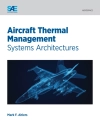This book offers an overview of European testing methods for fire protection materials.
Used in a broad range of applications, these materials are designed to ensure that fires do not occur, or that their effects are combated to the greatest extent possible. The book deals with methods not only for the construction industry but also, for example, for furniture / interior furnishings, plastics, and clothing, including special-purpose clothing for firefighters and rescuers, explosive mixtures, the intensity of smoke, etc.
This comprehensive book examines standardized testing methods, while also assessing large-scale tests and specialized non-standardized tests and providing information on various materials and their behavior when exposed to flame.
İçerik tablosu
Part I Combustion theory and testing history.- 1.Fire.- 2. The Theoretical Basis for Materials Testing Maybe.- 3. Testing of Materials for Fire Protection Use.- Part II Building materials.- 4. Testing of building materials.- 5. Testing of Cables, Conductors, and Wiring.- 6. Testing of Insulation Systems, Facades, and Roofs.- 7. Resistance to Fire.- Part III Interior materials.- 8. Testing of plastics.- 9. Testing of fabrics and clothing.- 10. Testing of furniture.- Part IV Special tests.- 11. Testing of Dust and Dust Mixtures.- 12. Smoke and Toxicity.- 13. Other special tests I.- Part V Non-standardized tests.- 14. We don’t have a chapter for laboratory non-standardized tests, I have to process them.- 15. Large-scale test methods.- Index.
Yazar hakkında
Linda Makovická Osvaldová is professor at the University of Žilina, Slovakia, Faculty of Security Engineering, Department of Fire Engineering. She studied at the Faculty of Wood at the Technical University in Zvolen, the study program ‘Fire Protection’ in the engineering study and the study program ‘Wood Processing Technology’ in doctoral degree. She obtained a Bachelor of Law degree from the Matej Bel University in Banská Bystrica, Slovakia. She deals with safety issues testing of materials used in technological processes, building constructions, as well as natural materials in forest fires and their impact on the safety of rescue components during firefighting.
Prof. Dr. Widya Fatriasari is a research professor at the Research Center for Biomass and Bioproducts, National Research and Innovation Agency (BRIN), Indonesia. She has been the research group head of Polyphenol-Based Bioproduct since 2019. She has obtained a Doctor of Forest Product Technology from Bogor Agriculture Institute. More than 160 national and international publications, 27 Patents, one industrial design, and one copyright have been produced during her research career (2006 – present). She published 5 International publications in high-impact factor journals such as the International Journal of Biological Macromolecules (IF. 8.025), Industrial Crops and Products (IF.6.449), Journal of Materials Research and Technology (IF.6.267), Polymer Degradation and Stability (IF. 5.204), Polymers (IF. 4.967), and Journal of Polymers and the Environment (IF.4.705). The primary research areas are biomass conversion, bioenergy, biorefinery, lignin valorization for bioproducts, cellulose-based bioproducts, and biomass chemistry. She has been involved in various research projects, such as lignin for biosurfactants, fire retardants, seed coating, biocomposite, marine biomaterials, cosmetic from biomass, biomedical pulp, and pulp and paper.












